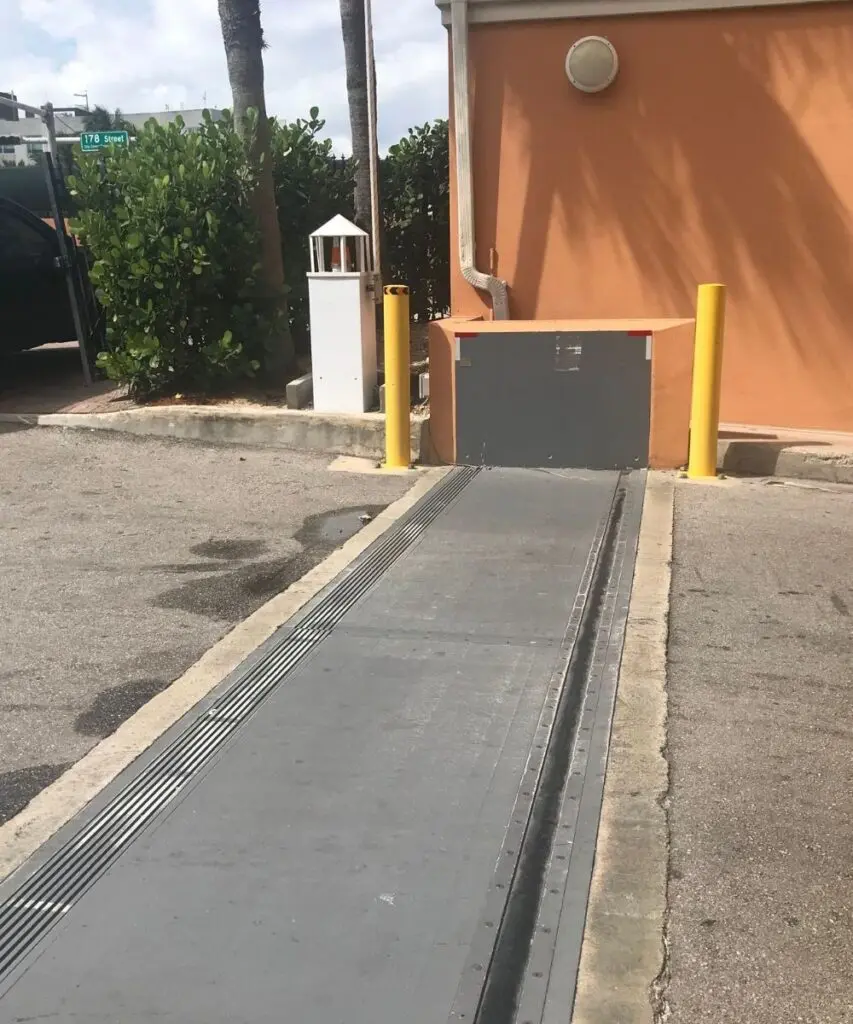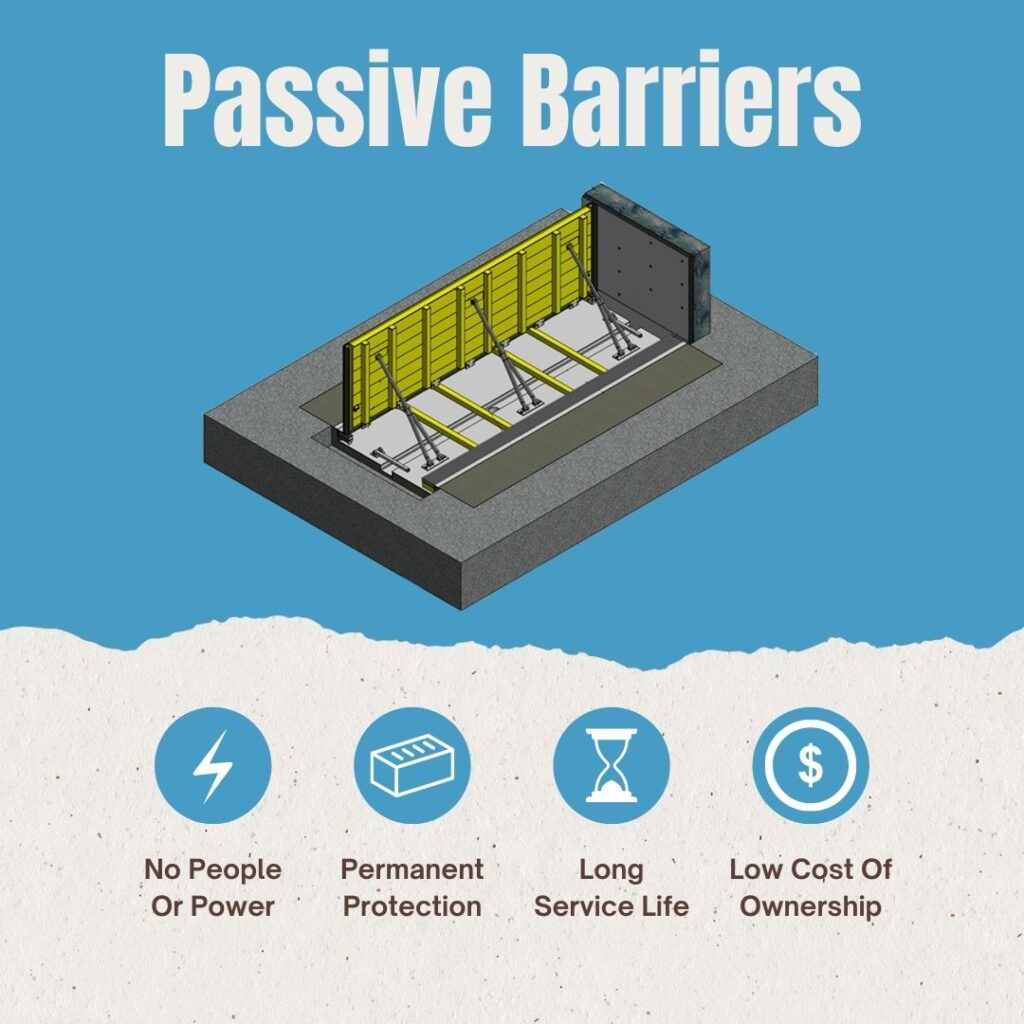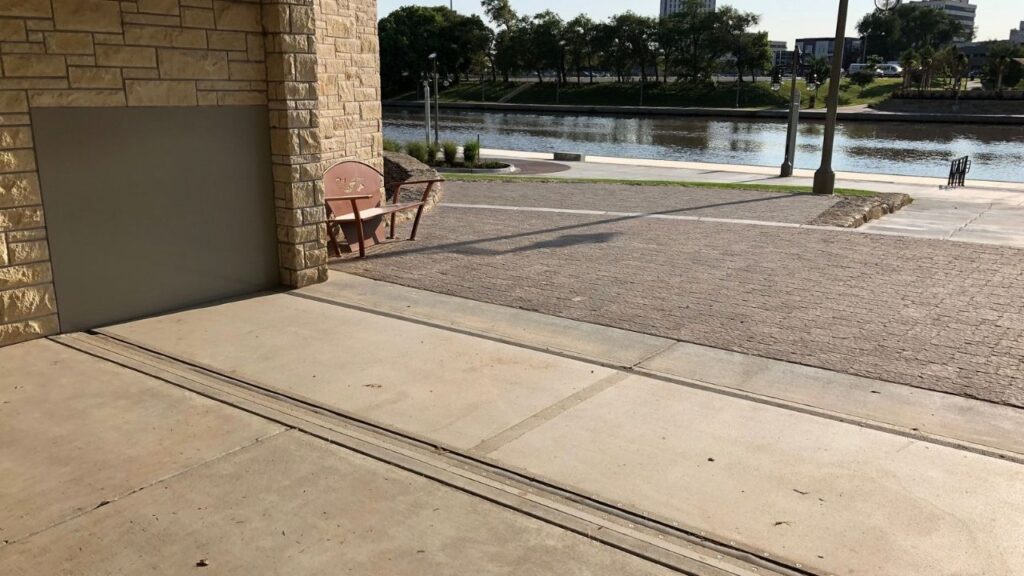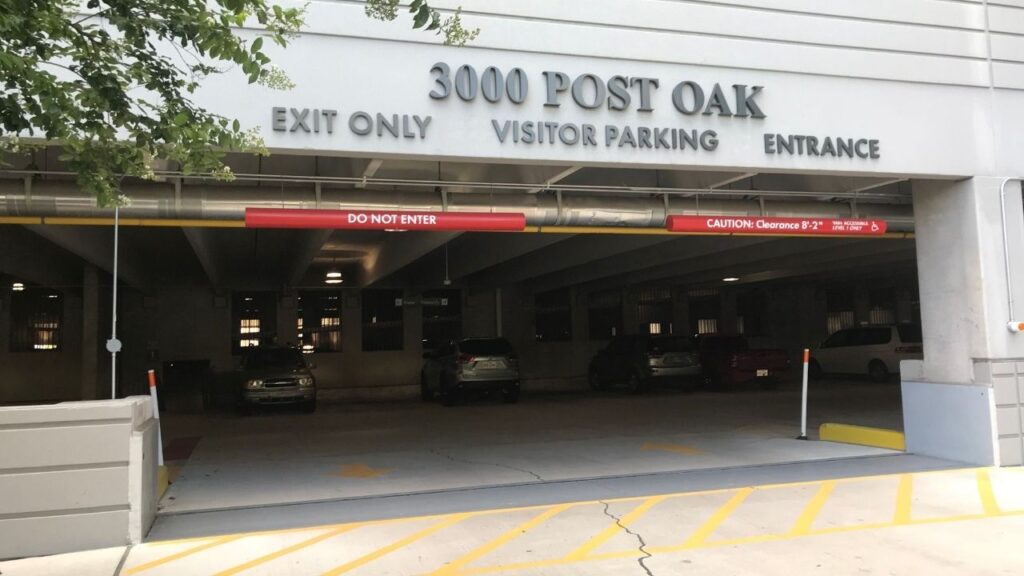What Is The Best Form Of Flood Protection?
Flood protection is in increasing demand given the recent surge in tropical storms, record-breaking hurricanes, and more frequent flash flooding around the globe.
As the horrors of flood devastation become real to people for the first time, many are starting to search for flood mitigation solutions.
While flood protection is not new, the methods and technological advances have reshaped in the industry over the past 2 decades are. For instance, FloodBreak’s passive flood barrier system was invented in 2001 after Tropical Storm Allison flooded much of Houston in just a few hours.
Passive flood barriers were created in order to improve upon the active and temporary measures that were common at the time. Temporary measures include sandbags, plastic barriers, inflatable tubes, and more.
These temporary, or “active” measures, require human intervention and/or electricity to deploy.

Passive Versus Active
Before passive flood control, the active solutions for large mitigation projects were often electric-powered flood doors or swing gates that completely block off vulnerable entryways. While these measures can be highly effective, they are prone to several downfalls.
Relying on human intervention makes them susceptible to human error. There are many documented failures where active measures failed to protect because personnel did not correctly deploy them.


Why Passive Flood Protection Is Best
We have a whole page on our website dedicated to discussing the benefits of passive flood protection over active. Please head over there for a more in-depth breakdown.
In short, passive flood protection several main benefits over active.
The first is the nature of passive.
By being passively activated, our gates are not susceptible to human error or electrical failures. The flood barriers will self-rise and protect if a flood occurs, period.
Second, our passive flood barriers are permanent.
Most active measures are only temporary and must be re-deployed for each individual flood event. FloodBreak passive flood barriers provide 24/7 protection as long as they remain in the ground.
Finally, passive has never failed to deploy and protect during a flood event.
In over two decades there have been zero document failures of our flood barriers to deploy and protect. In contrast, there are countless examples of active measures failing to deploy.
Passive flood barriers give property owners the highest-quality flood protection and 24/7 peace of mind that their assets are safe. They are a permanent form of flood control that does not require human interference or an external power source to deploy.
Passive flood barriers are not limited to a product line – they can be used as part of any flood mitigation project. Click the button below to see the different applications.
Who Needs Passive?
Passive flood protection offers several advantages over active measures.
Because of that, FEMA recommends passive flood protection for all non-residential buildings whenever possible.
FloodBreak’s passive barriers are a highly adaptable solution for all types of projects, such as extending levee closures, protecting pedestrian entryways into buildings, and protecting underground areas.
Does someone need a passive floodgate when they receive 3 inches of rain a year? Probably not. Residential homes that are not in a floodplain or only need a few inches of flood barrier are better off going with temporary measures like sandbags.
While FloodBreak has floodproofed residential properties before, we typically work with commercial properties and government entities due to the scope of those projects and the high level of required flood protection.



How Does It Work?
Passive flood barriers are activated via hydrostatic pressure from the floodwater itself. This pressure is powerful enough to lift the gate up in tandem with the rising water until it reaches a 90 degree angle with the ground.
Learn more about the specifics of this technology on our how it works page.
Is Passive Flood Control Right For You?
If you think passive flood barriers are what your property needs to stay protected, contact us at sales@floodbreak.com or reach us by completing the contact form below.
Contact Us: